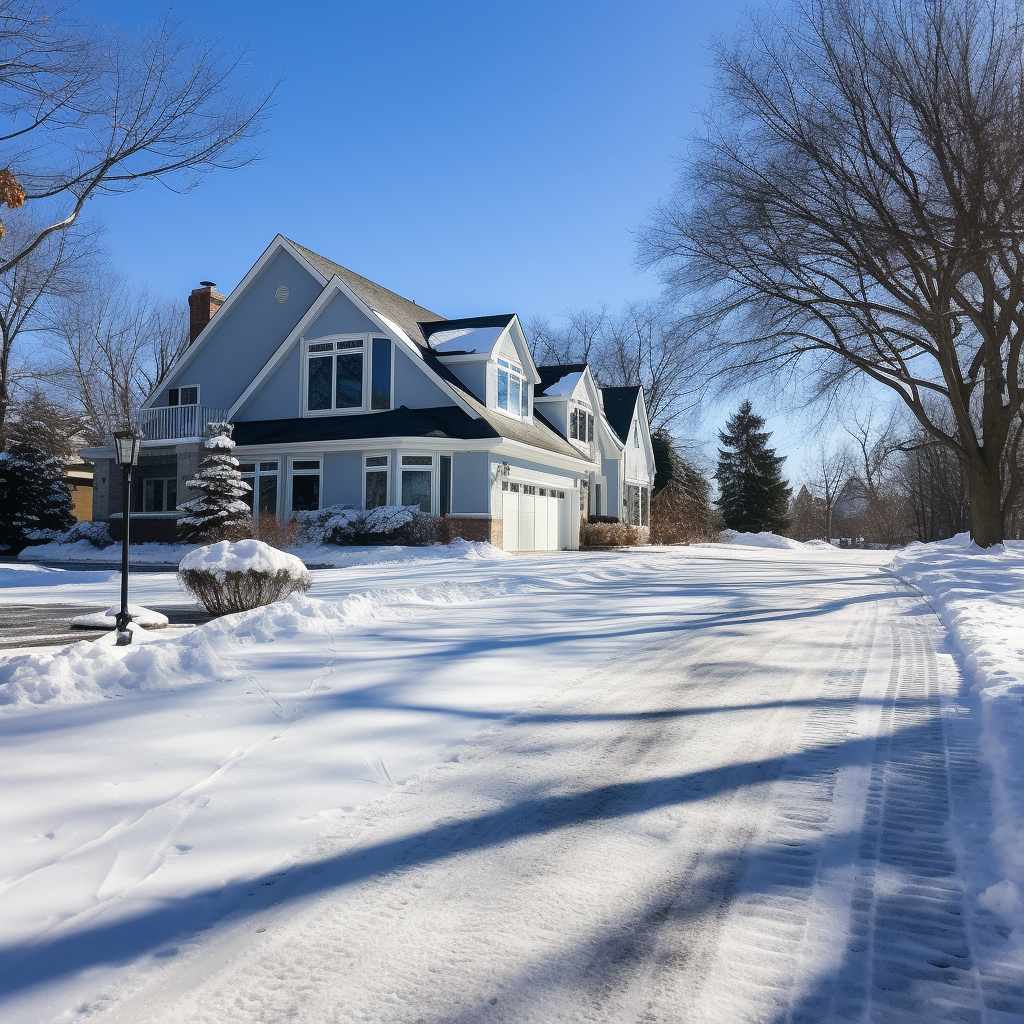Explore our expert tips for maintaining your concrete surfaces throughout the year, ensuring durability and beauty in every season.
Spring: Assess and Address
Spring is a crucial time for concrete maintenance, as the transition from cold to warmer weather can reveal the impact of winter on your surfaces.
- Comprehensive Inspection: Examine your concrete for signs of frost damage, such as cracks or surface flaking. Early spring, when snow and ice have cleared, is the ideal time for this assessment.
- Thorough Cleaning: Wash away the winter residues with a power wash. Pay particular attention to removing any salt or de-icing chemicals, which can accelerate the deterioration of concrete.
- Damage Repair: Address any identified damages immediately. Small cracks can be sealed using concrete crack fillers, while larger damages may require professional attention. Timely repairs can prevent minor issues from becoming major problems.
- Reapply Sealant: If your concrete was previously sealed, check the condition of the sealant. Winter weather can degrade sealant layers, so reapplying it may be necessary to ensure ongoing protection against moisture and wear.

Summer: Protect from the Heat
Summer brings its own set of challenges for concrete care, primarily due to high temperatures and intense sunlight.
- UV Protection: If not already done in spring, apply a UV-resistant sealant to your concrete surfaces. This helps prevent the concrete from drying out and cracking under the harsh summer sun.
- Regular Cleaning: Summer can bring more foot traffic and activities. Keep your concrete surfaces clean from spills, stains, and debris. Prompt cleaning will prevent permanent staining and maintain the surface’s aesthetic appeal.
- Mind the Heat: Avoid placing heavy objects on the concrete during the hottest part of the day, as extreme heat can make concrete more susceptible to pressure damage. Also, be mindful of activities that can spill greasy or acidic substances, which can erode the sealant and damage the concrete.

Fall: Pre-emptive Care
Fall is the time to prepare your concrete for the upcoming winter. The milder weather makes it perfect for maintenance work.
- Leaf and Debris Removal: Regularly clear leaves and other organic debris from your concrete surfaces. Decomposing leaves can leave stains and retain moisture, leading to surface damage.
- Sealant Inspection: Reevaluate your concrete’s sealant. If it’s showing signs of wear, a fresh coat before winter can provide additional protection against freezing temperatures and moisture.
- Water Drainage: Ensure that your concrete surfaces have proper drainage. Water pooling can lead to issues once temperatures drop. Clearing gutters and downspouts can help prevent water accumulation on concrete surfaces.
- Repair Minor Damages: Address any small cracks or damages. Left unattended, these can worsen during winter when water gets into them and freezes, expanding the cracks.

Winter: Minimize Damage
Winter is harsh on concrete surfaces, with the freeze-thaw cycle posing the biggest threat. Proper care during these months is crucial.
- Avoid Salt and Harsh Chemicals: Traditional salt-based de-icers can be very damaging to concrete. They can cause spalling and chipping and degrade the surface integrity. Instead, use safer alternatives like calcium magnesium acetate, which is less harmful to concrete.
- Timely Snow and Ice Removal: Regularly clear snow and ice from your concrete. Allowing snow to melt and refreeze can lead to the expansion of cracks. Use plastic shovels instead of metal to prevent scraping and damaging the sealant layer.
- Surface Treatment Checks: If your concrete is not sealed, consider applying a sealant that is appropriate for cold weather. This can provide an extra layer of protection against moisture and salt damage.


Comments